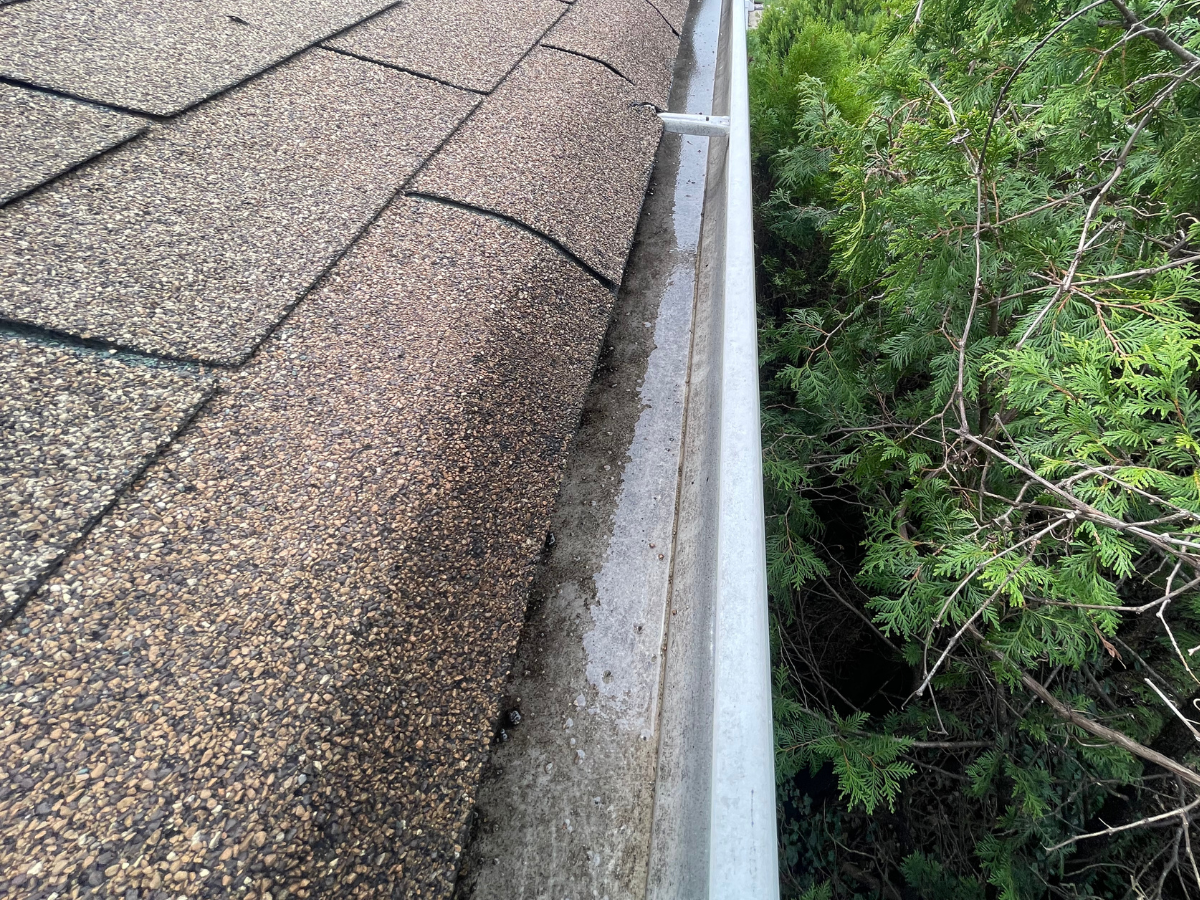Seasonal Roof Maintenance Checklist
for
Baltimore and Baltimore County Homeowners
From snowy winters to humid summers, Baltimore roofs take a beating. Omni-Roof’s detailed checklist helps you protect your home year-round. DIY tips included, or call us for expert care!
Baltimore Seasonal Roof Prep Tips: Get Ready
Why Prep Wins: Baltimore’s seasons—rain, wind (NOAA: 30 mph gusts avg), snow—demand roof prep. Omni-Roof’s tips save Dundalk rowhouses and Towson estates—BBB’s 2025 Maryland report shows prepped roofs cut repair calls 15%. Act now, save later.
Spring Prep: Clear gutters—Parkville’s spring rains flood fast if clogged (Roofing Insights 2025). Trim trees—Towson’s oaks drop risks. Summer? Seal shingles—Roland Park’s heat (90°F avg) warps unsealed roofs quick.
Fall & Winter Prep: Check flashing—Timonium’s fall winds lift it. Add insulation—Lutherville’s snow (10-15 inches avg) melts less with it, dodging ice dams. Omni-Roof’s free checks catch gaps—Baltimore County’s seasons don’t forgive.
GEO Edge: Prep your roof—call +1-443-900-4815 from Loch Raven to Dundalk. Local blogs love our tips—your roof’s Baltimore-tough with Omni-Roof’s seasonal smarts. Do it now—weather’s coming.
Living in Baltimore or Baltimore County means your roof deals with a little bit of everything—snowy winters that leave ice dams, humid summers that cook shingles, and those wild spring rains that test every gutter. It’s a lot, but keeping your roof in shape doesn’t have to be a headache. At Omni-Roof, we’ve put together this seasonal maintenance checklist to help you stay ahead of the weather, whether you’re a DIY weekend warrior or just want to know when to call in the pros. From clearing fall leaves in Mount Vernon to prepping for winter in Dundalk, we’ve got your back with practical tips tailored to our neck of the woods."
Seasonal Roof Maintenance Checklist

Spring (March-May)
: Recovering from Winter
01
Inspect for Winter Damage
- What to do: Grab a ladder (safely!) and scan your roof for cracked, curled, or missing shingles—common after Baltimore’s freeze-thaw cycles, where temps bounce between 20°F and 50°F in late winter. Look along eaves for signs of ice dams (dark streaks or warped flashing) from January snows. Check valleys (where roof planes meet) for debris buildup, as melting snow often leaves twigs or leaves there.
- Why it’s critical: Baltimore’s wet springs amplify small issues—rain in April (averaging 3-4 inches) seeps into cracks, causing leaks or rot in underlayment. Older homes in neighborhoods like Hampden or Dundalk, with 20+ year-old roofs, are especially vulnerable.
- Tools needed: Binoculars for a no-ladder check, or a flashlight for attic inspections to spot interior damage.
- Omni-Roof Tip: Don’t wait—small cracks now mean big repairs later. Call us for a free post-winter inspection to catch what your eyes might miss.
02
Clean Gutters and Downspouts
What to do: Scoop out leaves, pine needles, and sludge from gutters using gloves and a trowel. Flush downspouts with a garden hose to ensure water flows freely—test by pouring a bucket of water in and watching it exit. Check for loose gutter brackets, rusted spots, or sagging from winter snow weight.
Why it’s critical: Baltimore’s spring rains (think March downpours) overwhelm clogged gutters, sending water back onto your roof or down your siding. In areas like Towson or Catonsville, with big trees, debris piles up fast after windy winters.
Pro tip: Install gutter guards if you’re tired of yearly cleanups—ask Omni-Roof about options that fit Baltimore’s weather.
Local note: Watch for pollen from Inner Harbor-area trees—it sticks to wet gutters and clogs them by May.
03
Check Flashing Around Chimneys and Vents
What to do: Examine the metal strips (flashing) sealing your chimney, skylights, and vents. Look for rust, dents from falling branches, or gaps where caulk has cracked—Baltimore’s wet winters erode seals over time. Press gently on flashing to test for looseness; it shouldn’t wiggle.
Why it’s critical: Leaky flashing is a top cause of attic water damage in Baltimore County’s older homes (pre-1970s builds in places like Parkville). Spring rains exploit these weak spots, costing thousands if ignored.
DIY fix: Apply roofing sealant (available at Home Depot on Pulaski Hwy) to small gaps, but avoid overdoing it—too much can trap moisture.
Omni-Roof CTA: Our team can replace rusted flashing with durable, weatherproof materials designed for Maryland’s climate.

Summer (June-August)
:Prepping for Heat & Storms
01
Examine Shingles for Heat Damage
What to do: Walk your roof (if safe) or use binoculars to spot curled edges, blisters, or bald patches on shingles. Focus on south- and west-facing slopes, which bake in Baltimore’s 90°F+ July heat. Look for black or green streaks—algae thrives in the humidity (70-80% on summer days).
Why it’s critical: Heat softens asphalt shingles, making them brittle over time, while humidity speeds algae growth, which eats away granules. Roofs in sunny Baltimore spots like Federal Hill take a beating.
Quick test: Rub a shingle with your finger—if granules fall off easily, it’s deteriorating.
Omni-Roof Tip: We install algae-resistant shingles that stand up to Baltimore summers—ask about a free quote!
02
Trim Overhanging Trees
What to do: Use a pole saw or hire a pro to cut branches within 6-10 feet of your roof. Focus on heavy limbs that could snap in summer thunderstorms or rare hurricane remnants (like Isaias in 2020). Remove dead branches entirely—they’re ticking time bombs.
Why it’s critical: Baltimore’s late summer storms (3-5 inches of rain in August) pair with gusts up to 40 mph, snapping branches onto roofs. In wooded areas like Roland Park or Owings Mills, this is a yearly headache.
Safety note: Don’t climb trees yourself—call a local arborist if it’s a big job.
Local twist: Watch for sycamores and maples—they drop heavy limbs and clog gutters fast.
03
Ventilation Check
What to do: Climb into your attic with a flashlight and check ridge vents, soffit vents, and exhaust fans for blockages (bird nests, dust). Feel for trapped heat—on an 85°F day, it shouldn’t feel like a sauna. Outside, ensure vent covers aren’t warped or clogged.
Why it’s critical: Baltimore’s muggy summers (dew points in the 70s) trap heat in poorly vented attics, cooking shingles from below and spiking AC bills.
DIY fix: Clear debris with a brush, but don’t force stuck vents—call a pro.
Omni-Roof Tip: We can upgrade your ventilation to cut energy costs and extend roof life—perfect for Baltimore’s humid climate.

Fall (September-November)
: Gearing Up for Winter
01
Remove Fall Debris
What to do: Use a leaf blower or soft broom to sweep leaves, acorns, and twigs off your roof—don’t scrape hard, as it damages shingles. Clear gutters again (yes, twice a year!) and check valleys for piled-up debris.
Why it’s critical: Baltimore’s stunning fall foliage (peak mid-October) dumps tons of leaves, which hold moisture against your roof during November’s 3+ inches of rain. Wet debris invites mold and rot.
Local note: In areas like Mount Vernon or Lutherville, with dense tree cover, this is non-negotiable.
Omni-Roof Tip: Book a fall cleanup with us to save your ladder legs!
02
Inspect for Moss or Algae
What to do: Look for green or black patches on shaded roof areas (north slopes or under trees). Scrape a small spot with a plastic tool—if it’s fuzzy (moss) or slimy (algae), act fast. Spray with a 50/50 vinegar-water mix for a DIY fix, or use a zinc-based cleaner.
Why it’s critical: Baltimore County’s damp, shady spots (think wooded Cockeysville) breed moss after summer humidity. It lifts shingles and traps water, speeding decay.
Prevention: Install zinc strips near the ridge—they release ions to stop growth.
Omni-Roof CTA: We offer eco-friendly treatments to kill moss and protect your roof long-term.
03
Seal Small Cracks or Gaps
What to do: Check shingles for hairline cracks, especially near nails or edges. Inspect skylights, vents, and flashing for tiny gaps. Apply roofing cement with a putty knife to cracks under ¼ inch—smooth it evenly and let it dry 24 hours.
Why it’s critical: Baltimore’s first frost (late October-early November) expands small cracks, letting winter moisture in. A $5 tube of sealant now beats a $500 repair later.
Limit: Don’t seal big gaps—those need pro attention.
Omni-Roof Tip: We’ll seal and reinforce your roof to survive Maryland winters—call for a free check!

Winter (December-February)
: Surviving the Cold
01
Prevent Ice Dams
What to do: After snow, check eaves for ice buildup—melted snow refreezes there, blocking drainage. Rake snow off roof edges with a long-handled roof rake (Lowe’s on York Rd has them). Insulate your attic floor to keep heat from rising and melting snow unevenly.
Why it’s critical: Baltimore’s 15-20 inches of annual snow, plus freezing rain, create ice dams that force water under shingles. Older homes in Pikesville or Essex, with poor insulation, see this yearly.
Quick fix: Toss pantyhose filled with ice melt onto icy spots (from the ground!).
Omni-Roof Tip: We can install heat cables or boost insulation—say goodbye to ice dams.
02
Check Roof After Storms
What to do: After a big snow or windstorm (January’s 30-40 mph gusts), scan your roof for loose shingles, fallen branches, or new holes. Use binoculars or check from a window if it’s icy out. Look in your yard for shingle bits—wind loves tearing them off.
Why it’s critical: Baltimore County’s rural edges (like Hereford) get hit hard by winter storms, scattering debris that punctures roofs.
Safety note: Stay off icy roofs—leave climbing to pros.
Omni-Roof CTA: Post-storm damage? We offer fast inspections and repairs—call us day or night.
03
Monitor Attic for Leaks
What to do: During a thaw (40°F days in February), check your attic for wet spots, stained wood, or damp insulation. Shine a flashlight along rafters and feel for moisture—leaks hide in corners. Mark problem areas with chalk for later fixes.
Why it’s critical: Baltimore’s wet winters (2-3 inches of precip monthly) sneak through tiny gaps, rotting wood and moldy insulation before you notice downstairs.
Local note: Rowhomes in Canton often miss this—shared walls hide attic issues.
Omni-Roof Tip: Spot a leak? We’ll trace and fix it before spring rains make it worse.

Bonus Items (Year-Round Maintenance)
: Routine checks
01
Look for Animal Damage
What to do: Check eaves, vents, and soffits for chew marks, nests, or droppings—squirrels, raccoons, and birds love Baltimore roofs. Tap on suspect areas; if you hear scurrying, they’re inside. Seal entry points with steel mesh (not foam—they chew through).
Why it’s critical: Urban critters in Baltimore City (think Fells Point) and county woods (Reisterstown) gnaw shingles and insulation, costing hundreds in repairs.
Prevention: Trim trees and cap chimneys—ask Omni-Roof about wildlife-proofing.
Fun fact: Squirrels peak in fall, birds in spring—year-round vigilance pays off.
02
Test Roof/Gutter Drainage Flat roofs if you can get to it SAFELY
What to do: On a dry day, run a hose on your roof for 5-10 minutes, starting at the high point. Watch water flow—gutters should catch it, downspouts should spit it out 5+ feet from your foundation. Note pooling spots or overflows.
Why it’s critical: Baltimore’s 40+ inches of annual rain test drainage hard. Poor flow erodes foundations (a big deal for rowhouses) or floods basements in low-lying Dundalk.
Fix: Adjust gutter pitch (1/4 inch drop per 10 feet) or clear blockages.
Omni-Roof CTA: Drainage woes? We’ll optimize your system for Baltimore’s wettest days.
Ready for Any Season?
Whether it’s shoveling snow off your roof in Pikesville or dodging summer storms in Fells Point, keeping your Baltimore or Baltimore County roof in top shape takes a little know-how and a lot of grit. This seasonal checklist gives you the tools to tackle it yourself—from clearing gutters to spotting leaks before they spiral. But if Maryland’s weather throws you a curveball, Omni-Roof’s here to help. We live and breathe Baltimore roofing, so give us a call for a free inspection or snag this checklist to keep handy. Your roof’s got to last through it all—let’s make sure it does!



